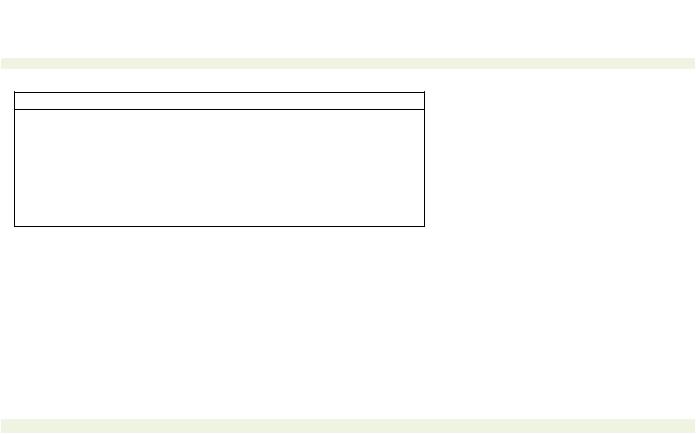
water quality and system
.pdf
< previous page |
page_72 |
next page > |
Page 72
the pipe. In theory, the ideal depth for a round pipe that does not flow full will be about 8/10 of the diameter, but almost all sewer piping is oversized so that it does not flow at the ideal depth. In sanitary sewers and to some extent in stormwater sewers, organic matter in the water is broken down by the action of microbes. The process releases water and gases. The two most common gases released are carbon dioxide and methane. In addition, hydrogen sulfide, an extremely foul-smelling gas, is a byproduct of the organic decomposition process. The blanket of air lying on top of the water inside sewer pipes provides a channel for this gas to escape (see Chapter 8).
Sewer lines also use the blanket of air for "floating" debris that would otherwise rub against the underside top of the sewer pipe and slow down or plug up the flow.
Further, sewer lines flowing partially full are not pressurized. If there is a leak in the piping on the top half of the circle of pipe, leaks will allow water in, instead of being forced out. For this reason, sewer pipes are buried in the ground below the level of the supply water lines.
Sewer lines have to slope downward at about the same angle
Table 4-1. Computer modeling software program vendors |
|
Program |
Vendor |
The Crane Company Fluid Flow Software |
The Crane Company |
Plumbware's Plumbcad Software |
Plumbware Company |
Hydraulic Calculation Program |
Custom House Designs |
AutoCad Plumbing |
AutoCad Software |
Flo-Series, Integrated Piping Design |
Engineered Software, Inc. |
|
1015 10 Ave, SE |
|
Olympia, WA 98507 |
|
(800) 786-8545 |
Cybernet Version, Autocad Integrated |
Haestad Methods |
|
37 Brookside Road |
|
Waterbury, CT 06708 |
|
(800) 727-6555 |
Design & Estimating Software |
Elite Software |
|
P.O. Box Drawer 1194 |
|
Bryan, TX 77806 |
|
(409) 846-2340 |
Advanced Computer Design Support & Training |
A.I. Systems |
|
3300 South 3090 |
|
Salt Lake City, UT 84101 |
|
(801) 363-6119 |
< previous page page_72 next page >

< previous page |
page_73 |
next page > |
Page 73
How to Quickly Estimate Pipe Flow Capacities
Most engineers use the velocity to select the pipe size using what is called the continuity equation. An engineer estimates a first guess velocity of 10 feet per second and calculates a size (diameter) from that number. For a facility manager, all he needs to do is look at the size (diameter) and multiply the area of the pipe by 10 feet per second. This will be close to the maximum flow that can be carried by the pipe. This trick is the method used in firefighting codes for firefighters to estimate pipe flow capacities. But the facility needs to be careful because the engineer sometimes uses different velocities as a result of pressure or friction losses. The typical 10 feet per second for pipe sizes 3 inches in diameter and larger is the fastest "safe" velocity. Faster velocities can be used but bubbles, bends and friction losses take a toll on these rule-of-thumb numbers.
that the water will flow. If the sewer line is too flat, it will fill up with water and become pressurized. If it is too steep, all the water will rush out from under the solids, and the solid material will be left to decompose in the pipe instead of being carried downstream to the sewage treatment plant.
Without calculations, plumbing codes require sewer lines to slope downward at 1/4-inch of fall per root of horizontal run. This works out to be one inch in 4 horizontal feet, or 2-1/2 inches in 10 horizontal feet. This rule, by code, combined with the sizing requirements for the sewer pipe diameter, has proved satisfactory for the past 90 years. It is backed up by years of research and hundreds of technical papers.
If there is an obstruction in a building that is in the way of the sewer pipemost often, it is a beam that holds up the flooreither the sewer pipe or the beam must be moved. Raising the sewer pipe is difficult because it means the toilets have to be moved or raised. If the pipe is lowered, it can mean the sewer pipes must run along the ceiling of the floor below.
The third alternative is to cut or move the building's beam, but this can be a problem since it may weaken the structure enough the building could wind up in danger of collapse.
On a big construction job, ironworkers who install the beams love to squabble with the pipe fitters, who install the sewer pipes over this issue. It usually requires some redesign to make the pieces
< previous page |
page_73 |
next page > |

< previous page |
page_74 |
next page > |
Page 74
fit together for which the owner, if he is not careful, ends up paying.
Outside buildings, sewer pipes have the slopes calculated by engineers. For any flow and pipe diameter, there is an ideal slope to make the sewer water flow at the proper depth. The larger the pipe, the flatter the slope. The calculations to figure these depths, flows and slopes are slightly complex, but since the science has been fairly well established, computer programs and piping handbooks define the ideal slopes, diameters and flows. In the same way pipes are sized for supply lines, pipe sewer designers choose the next larger pipe diameter for sizing sewer pipes.
For utility work, a sewer manhole is placed every 300 ft. or so along the sewer line. The exact distance is often specified by the city or local jurisdiction. Manholes allow utility operators to measure the flows and to unplug the lines. Sewer lines are always straight between the manholes, and manholes are where the directions and slopes of sewer lines are changed. Flows can come into manholes from different directions and all flow out one large single line. If a line is plugged between two manholes, the upstream manhole can be pumped, to keep sewer lines flowing while crews work to unplug the affected line.
A couple of other items relative to sewer systems will complete this section of discussion about sewer and wastewater piping. Occasionally, sewer water is too low or the ground is too fiat to achieve the necessary slopes for sewer piping. When this happens, a "lift station" is installed. A sewer lift station uses pumps to lift the sewage water up, usually only a few feet so that it can run downhill again. For long fiat lines, a series of lift stations are used. Pumps are used to lift the water, but because sewer water has solids in it, a grinder is installed upstream of the pump. The grinder breaks up the solids in the flow so that it can be pumped by the lift pump. Some special types of pumps are also used that can lift the water and the solids. Pumps of the peristolic or diaphragm type are sometimes used.
Problems with lift stations and grinders come when the pumps fail, because the sewage flows continue and cleaning up sewage at a failed lift station is a mess. For this reason, almost all lift stations are fully doubleddouble pump, double grinder, double power, backup power supply, etc. in order to reduce the chance of failure and to facilitate easier cleanup.
< previous page |
page_74 |
next page > |

< previous page |
page_75 |
next page > |
Page 75
Plumbing
Plumbing is the process of installing or fixing pipes inside buildings. The word is also used to mean the pipe system itself. In ancient Roman times, pipes and drains were made from lead and a lead worker was a pipe worker. The word "plumb" originally meant "lead" in Latin. In the 18th century, pipes were also made from lead and even 50 years ago, pipes were sealed with molten lead. Hence the trade name for a worker who installed or repaired pipes became "plumber."
Installing pipe inside buildings requires knowing and understanding water flow in addition to understanding pipes and how they fit together. Plumbing is a skilled trade and plumbers spend years learning the codes. In many states, a plumber is apprenticed, then takes a test before he is licensed.
Within buildings, supply and waste pipes are installed according to laws designed to protect the building's occupants. Wastewater potentially carries disease and supply water can be contaminated if the two systems are installed incorrectly.
Supply pipe installation has already been discussed previously in this chapter. There remains a short discussion about wastewater piping for the facility manager to become fairly knowledgeable about plumbing systems.
Traps and Vents
Plumbing drain systems use traps and vents to "trap" the sewer gases and "vent" them to the outside of the building. A figure of a P-trap is shown in Figure 4-8. The trap fills with water and keeps the sewer gases from backing up into the room. A vent is installed downstream from the trap to let the gases out of the building. A sketch of a trap and vent is shown in Figure 4-9.
Traps and vents are required by the codes to be within fixed distances from the drain (see Chapter 7 on regulations). If they are too far from the drain, the effect of the trap is not realized. A toilet, by the way, is a sophisticated and special type of trap.
Supply and waste lines inside buildings are sized according to the size of the drains and the numbers of fixtures within the buildings. The sizes are also regulated by the plumbing codes. Table 4-2 provides a sampling of some of the sizing requirements from the Uniform Plumbing Code.
< previous page |
page_75 |
next page > |

< previous page |
page_76 |
next page > |
Page 76
Figure 4-8.
A plumber's P-type trap fills with water and keeps sewer gases from backing up into a room. Courtesy: Step By Step Guidebooks, Inc.
Air Gap
The plumbing code requires that certain appliances have an air gap to prevent water from siphoning out of a trap or from the appliance (see Figure 4- 9). The air gap keeps the trap wet.
Cleanouts
A cleanout is a plugged tee installed in drain lines for allowing sewer pipes to be cleaned. When a line becomes plugged, the cleanout can be opened and a special coiled cable called a snake inserted into the pipe to break up whatever is causing the lines to be plugged. More information on using snakes to clean out drain pipes is discussed in Chapter 14 on maintenance.
Backflow Preventers and Crossed Connection Control
Backflow preventers are installed in supply lines to prevent water from flowing backwards in them. This can happen in supply lines when the main valves are turned off. The problem with isolated lines is that contaminated water can sometimes be drawn into the fresh water supply lines.
A classic example of this occurs when using a hose in a swim-
< previous page |
page_76 |
next page > |

< previous page |
page_77 |
next page > |
Page 77
Figure 4-9.
A trap and vent system. Gravity brings water through the pipe, causing a vacuum in the pipe above it, called siphon action.
The suction effect draws the water from the trap nearly completely, exposing the fixture to easier transmission of sewer gases through
the pipe. Venting prevents this suction, drawing gases from the outside air, typically through roof vents. Reprinted from Step by Step Guide Book on Home Plumbing with permission of Step By Step Guide Book Co.
ming pool. If the water supply line is turned off and drained, the swimming pool water can be drawn back into the water supply lines. Then when the water supply line is turned back on again, the pool water, which may not be sanitary enough for drinking, is pushed on to the cold drinking water taps. Backflow preventers keep the lines charged and prevent water from being drawn back into the system.
Cross connection control is essentially a management activity. It means management of the system to prevent the wastewater lines and the fresh water lines from becoming interconnected. A cross connection control program is one where checks are made to verify the lines have not been crossed. There is an association of professionals dedicated to preventing crossed connection in water and sewer lines (see Chapter 15).
< previous page |
page_77 |
next page > |

< previous page page_78
Table 4-2. Drain pipe sizing criteria from the Uniform Plumbing Codes. Source: ANSI A40-1996 (Pending), Safety Requirements for Plumbing; Uniform Plumbing Code, International Association of
Plumbing And Mechanical Officials, Walnut, California. |
|
|
|
|
|
||||||
|
Maximum Unit Loading and Maximum Length of Drainage and Vent Piping |
12 |
|||||||||
Size of Pipe, Inches 1-1/4 |
1-1/2 |
2 |
2-1/2 |
3 |
4 |
5 |
6 |
8 |
v10 |
||
(mm) |
(32) |
(38) |
(51) |
(64) |
(76) |
(102) |
(127) |
(152) |
(203) |
(254) |
(305) |
Maximum Units |
|
|
|
|
|
|
|
|
|
|
|
Drainage Piping1 |
1 |
22 |
163 |
323 |
484 |
256 |
600 |
1380 |
3600 |
5600 |
8400 |
Vertical |
|||||||||||
Horizontal |
1 |
I |
83 |
143 |
354 |
2165 |
4285 |
7205 |
26405 |
46805 |
82005 |
Maximum Length |
|
|
|
|
|
|
|
|
|
|
|
Drainage Piping |
45 |
65 |
85 |
148 |
212 |
300 |
390 |
510 |
750 |
|
|
Vertical, feet |
|
|
|||||||||
(m) |
(14) |
(20) |
(26) |
(45) |
(65) |
(91) |
(119) |
(155)' |
(228) |
|
|
Horizontal (Unlimited) |
|
|
|
|
|
|
|
|
|
|
|
Vent Piping |
|
|
|
|
|
|
|
|
|
|
|
Horizontal and Vertical |
83 |
24 |
48 |
84 |
256 |
600 |
1380 |
3600 |
|
|
|
Maximum Units |
1 |
|
|
||||||||
Maximum Lengths, |
45 |
60 |
120 |
180 |
212 |
300 |
390 |
510 |
750 |
|
|
feet |
(14) |
(18) |
(37) |
(55) |
(65) |
(91) |
(119) |
(155) |
(228) |
|
|
(m) |
|
|
|||||||||
(See Note) |
|
|
|
|
|
|
|
|
|
|
|
1 Excluding trap arm.
2 Except sinks, unnals and dishwashers.
3 Except six-unit traps or water closets
4 Only four (4} water closets or six-unit traps allowed on any vertical pipe or stack; and not to exceed three (3) water closets or six-unit traps on any horizontal branch or drain.
5 Based on one-fourth (1/4) inch per foot (20.9 ram/m) slope. For one-eighth (1/8) inch per foot (10.4 ram/m) slope, multiply horizontal fixture units by a factor of 0.8.
Note: The diameter of an individual vent shall not be less than one and one-fourth (1-1/4) inches (31.8 ram) nor less than one-half (1/2) the diameter of the drain to which it Is connected. Fixture unit load values for drainage and vent piping shall be computed from Tables 7-3 and 7-4. Not to exceed one-third (1/3) of the total permitted length of any vent may be installed in a horizontal position. When vents are increased one (1) pipe size for their entire length, the maximum length limitations specified in this table do not apply.
(table continued on next page) |
|
< previous page |
page_78 |
next page >
Page 78
next page >

< previous page |
|
|
page_79 |
|
|
Table 4-2 continued. |
|
|
|
|
|
Drainage Fixture Unit Values (DFU) |
|
Public |
|||
|
Min. |
|
Private |
|
|
|
Size |
|
3 or more |
General Heavy-Use |
|
Individual Fixtures |
Trap and lndividual |
||||
Trap |
Dwelling |
Dwellings |
Use |
Assembly |
|
Bar Sink |
Arm7 |
1.0 |
1.0 |
|
|
1-1/2'' |
2.0 |
|
|||
Bar Sink |
1-1/2"2 |
3.0 |
3 0 |
|
|
Bathtub or Combination |
1-1/2" |
|
|
||
Bath/Shower |
1-1/4" |
1.0 |
1.0 |
|
|
Bidet, 1-1/4" trap |
6.0 |
|
|||
Clinical Sink, 3" trap |
3" |
3.0 |
3.0 |
|
|
Clothes Washer, domestic, 2" |
2" |
3.0 |
|
||
standpipe5 |
1-1/4" |
|
|
1.0 |
|
Dental Unit, cuspidor |
2.0 |
2.0 |
|
||
Dishwasher, domestic, with |
1-1/2" |
2.0 |
|
||
independent drain |
1-1/4" |
|
|
0.5 |
|
Drinking Fountain or Watercooler |
|
|
|
||
Food-waste-grinder, commercial |
2" |
|
|
3.0 |
|
Floor Drain, emergency |
1-1/2"2 |
2.0 |
2 0 |
0,0 |
|
Kitchen Sink, domestic, with one 1- |
2.0 |
|
|||
1/2' trap |
1-1/2"2 |
2 0 |
2.0 |
2.0 |
|
Kitchen Sink, domestic, with food- |
|
||||
waste-grinder |
1-1/2"2 |
3.0 |
3.0 |
3.0 |
|
Kitchen Sink, domestic, with |
|
||||
dishwasher |
1-1/2"2 |
3.0 |
3.0 |
3.0 |
|
Kitchen Sink, domestic, w/grinder |
|
||||
and dishwasher |
1-1/2" |
2.0 |
2.0 |
2.0 |
|
Laundry Sink, one or two |
|
||||
compartments |
1-1/2" |
2.0 |
2.0 |
2 0 |
|
Laundry Sink, with discharge from |
|
||||
clothes washer |
1-1/4" |
1.0 |
1.0 |
1 0 |
1.0 |
Lavatory, single |
|||||
Lavatory in sets of two or three |
1-1/2" |
2 0 |
2.0 |
2 0 |
2.0 |
Mobile Home, trap |
3" |
12.0 |
12.0 |
3.0 |
|
Mop Basin, 3" trap |
3" |
|
|
|
|
Receptor, indirect waste, 1-1/2" |
1-1/2" |
|
|
(1) |
|
trap1.3 |
2" |
|
|
(1) |
|
Receptor, indirect waste, 2" trap1.4 |
|
|
|
||
Receptor, indirect waste, 3" trap1 |
3" |
|
|
(1) |
|
Service Sink, 2" trap |
2" |
|
|
3.0 |
|
Service Sink, 3" trap |
3" |
2 0 |
2.0 |
3.0 |
|
Shower Stall, 2" trap |
2" |
2.0 |
|
||
Showers, group, per head |
2" |
|
|
5.0 |
|
(continuous use) |
1-1/2"2 |
|
|
3.0 |
|
Sink, commercial, 1-1/2" trap, with |
|
|
|
||
food waste |
3" |
|
|
6.0 |
|
Sink, service, flushing rim |
2.0 |
2.0 |
|
||
Sink, general, 1-1/2" trap |
1-1/2" |
2.0 |
|
||
Sink, general, 2" trap |
2" |
3.0 |
3 0 |
3 0 |
|
Sink, general, 3" trap |
3" |
|
|
5.0 |
5 0 |
Urinal, 1.0 GPF |
|
|
|
4.0 |
|
Urinal, greater than 1.0 GPF |
1-1/2"2 |
|
|
5 0 |
6.0 |
Urinal, 1-1/2" trap |
|
|
4.0 |
5.0 |
|
Washfountain, 1-1/2" trap |
1-1/2" |
|
|
2.0 |
|
Washfountain, 2" trap |
2" |
|
|
3 0 |
|
Wash Sink, each set of faucets |
3" |
3 0 |
3.0 |
2 0 |
6.0 |
Water Closet, 1.6 GPF Gravity |
4.0 |
||||
Tank6 |
3" |
3 5 |
3.5 |
5 0 |
8.0 |
Water Closet, 1.6 GPF Flushometer |
|||||
Tank6 |
3" |
3 0 |
3.0 |
4.0 |
6.0 |
Water Closet, 1.6 GPF Flushometer |
|||||
Valve6 |
3" |
4 0 |
4.0 |
6 0 |
8.0 |
Water Closet, 3.5 GPF Gravity |
|||||
Tank6 |
3" |
4 0 |
4.0 |
6 0 |
8 0 |
Water Closet, 3.5 GPF Flushometer |
|||||
Valve6 |
2" |
3.0 |
3.0 |
|
|
Whirlpool Bath or Combination |
|
|
|||
Bath/Shower
1lndirect waste receptore shall be sized based on the total drainage capacity of the fixtures that drain therein to, in accordance with Table 7-4.
2Provide a 2' minimum branch drain beyond the trap arm.
3For refrigerators, coffee ums, water stations, and similar low demands. 4For commercial sinks, dishwashers, and similar moderate or heavy demands
5 Clothes washers in groups of three (3) or more shall be rated at six (6) units each for the purposes of sizing common honzontai and vertical waste piping.
6 Water closets shall be computed as six (6) fixture units when determining septic tank sizes based on Appendix K of this Code.
7Trap sizes shall not be increased to the point where the fixture discharge may be inadequate to maintain their self-scounng properties.
next page >
Page 79

< previous page |
page_79 |
next page > |

< previous page |
page_81 |
next page > |
Page 81
Chapter 5
Upgrades and Renovations
Many factors prompt an upgrade of the water system, such as changing user needs, controlling costs and replacing old, unreliable pipes and components. But other factors come into play as soon as the job is starteduser demands, frustrations, a low budget and other factorswhich may cause the water system to be upgraded without planning. As in any renovation or upgrade, careful planning is essential to success.
Renovation Strategies
In facility water management, the time comes when the manager decides it is time to upgrade the system. The decision should be a logical one, driven by the life of the system and the scheduled replacement time of the system's components.
While a simple residential bathroom remodeling project is relatively inexpensive, as low as $2,500 in 1995 dollars, remodeling the bathing facilities for a large airport or sports arena is a major task, involving new subgrade, pipes, plumbing, fixtures, flooring, wall tiles, lighting and air conditioning.
Toilet facilities, because of the coordination of trades and the cost of the materials, are one of the most expensive elements. In addition, because they are not rented, their cost is incorporated into the cost of the lease. Hence a facility manager who manages a commercial rental property finds that one of his most expensive rooms in the building generates him the same revenue per square foot as general spaces.
< previous page |
page_81 |
next page > |
